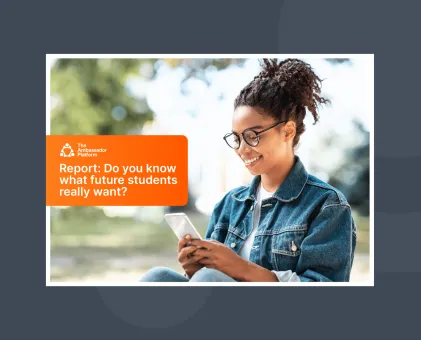The student experience as the true (only?) differentiator

The below is inspired by the thought-provoking article Go compare – The emerging threat to higher education by Louise Nicol and Alan Preece.
We live in an increasingly undifferentiated Higher Education world. In his unapologetic and brilliant Rethinking Australian Higher Education, Dr John H Howard argues that the current COVID-induced downturn is an opportunity for Australian universities to reshape the sector through more diverse and flexible offerings. Dr Howard encourages universities from Down Under to break away from a system that ‘…lacks diversification in terms of institutional forms and education delivery options’ and ‘…doesn’t meet the distinct educational needs of students and businesses in a growing service-oriented knowledge economy.’ British, American, Canadian institutions can hardly breathe a collective sigh of relief; their borders might be open, but that one-size-fits-all approach is bad for any business, including education.
The great commodification of Higher Education
There are exceptions to the sameness that is pervading Higher Education. Some innovative institutions are trialling new delivery modes (like VU’s Block Model), and the proliferation of programmes in Artificial Intelligence, FinTech, Cyber Security, Data Analytics indicate universities do make an effort to meet the burgeoning demand for new knowledge. The reality, though, is that prospects can only perform a superficial assessment of an institution's value proposition before enrolling; their first real experience with that institution only happens after they start attending class. Thus, the conversation marketing and recruitment departments are having should shift from 'how do we add value to our offering to attract more students?' to 'how do we communicate our existing, highly distinctive value proposition to prospects who have never experienced our university?'.
Although price, grades and rankings have traditionally acted as signals for quality, technology and the constant pursuit of budget surplus are rapidly evening out the playing field:
- Price – Rankings and aggregator websites allow prospects to compare thousands of institutions in minutes so increasing tuition fees no longer communicates high quality.
- Grades – Lowering entry requirements to make up for revenue shortfalls was a common practice well before the pandemic, and it is now done to relieve pressure and anxiety for students who have been impacted by the continuous disruption. Regardless of the reasons behind such a move, entry requirements are becoming more and more uniform.
- Rankings – Rankings are complex and the criteria used to compile them are not entirely transparent, or dare I say it, fair. Universities invest heavily in improving their rankings but results aren´t always proportional to their efforts. Most importantly, prospects consider employability a more important driver of choice than staff quality, research output and even student satisfaction (QS International Student Survey 2020). As graduate employment is seldom included in university rankings, there is a disconnect between what students and ranking bodies perceive as indicators of quality.
So how do you stand out? No, really, how do you stand out?
In simple terms, the value a university offers comprises an education, a certification (the two are completely different concepts), and the student experience. The implicit challenges of communicating the first two dimensions to prospects, combined with traditional signals for quality losing efficacy, mean universities need to leverage the student experience as the true differentiator, that one element that sets them apart from the competition. From the way students acquire knowledge to social activities, from living in a new country to speaking and learning in a different language, from student support services to honing their employability skills, the experience is as eclectic as it is valuable to every institution’s marketing and recruitment team because of the many angles through which it can be represented.
To avoid getting lost in the crowd, an accurate reflection of the student experience can make any institution stand out and stand tall while adding a (powerful) string to its marketers and recruiters' bow.
Leveraging institutions’ most precious marketing asset: the student experience
Glossy prospectuses and expensive digital and advertising campaigns hardly ever achieve cut-through because staged photos and elaborate copywriting can't match the authentic, genuine, and multi-layered insight current students provide. Institutions can optimise their enrolment funnel and save hundreds of thousands of dollars by letting those living the university experience speak to it. As it turns out, universities don't need to pay consultants or hire highly-flying marketing executives from Silicon Valley; all they have to do is give their student ambassadors a platform upon which they can engage and interact with prospects. It's really that simple.
Experience Communication Management (XCM) technology like The Ambassador Platform (TAP) is intuitive, takes minutes to set up, and enables institutions to leverage their best and most precious asset: the student experience. It helps redefine and elevate the role of the online student ambassador too. Through XCM and TAP, universities can boost their marketing and recruitment capabilities by expressing the uniqueness of the experience they offer. Best of all, they can do so effortlessly and in-house, all while cultivating and investing in homegrown talent.
Showcase your institution's unique student experience to prospects
If you're interested in The Ambassador Platform and what it can do for your institution then why not book a demo?


